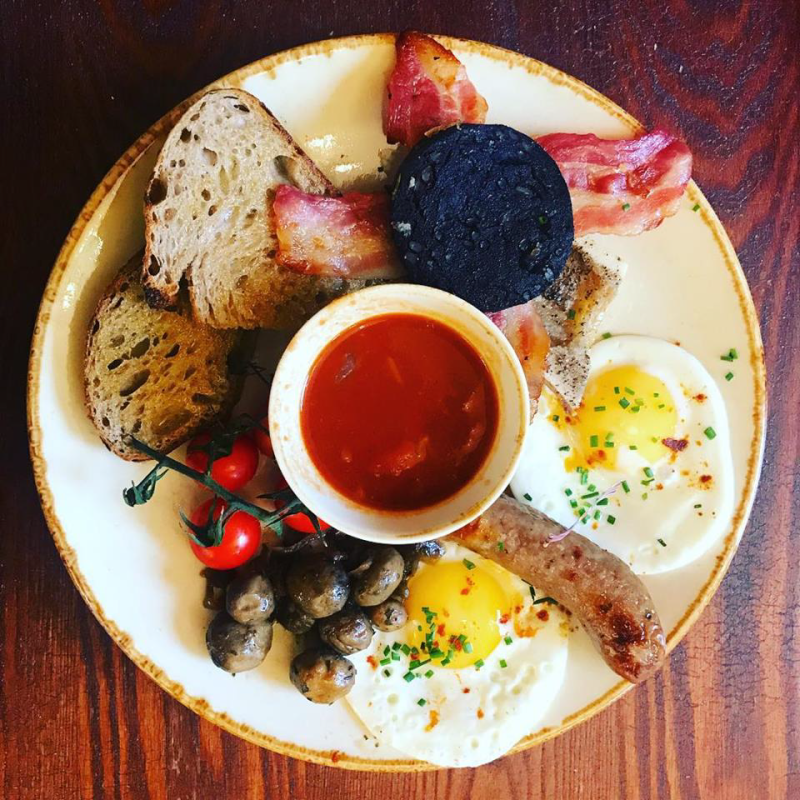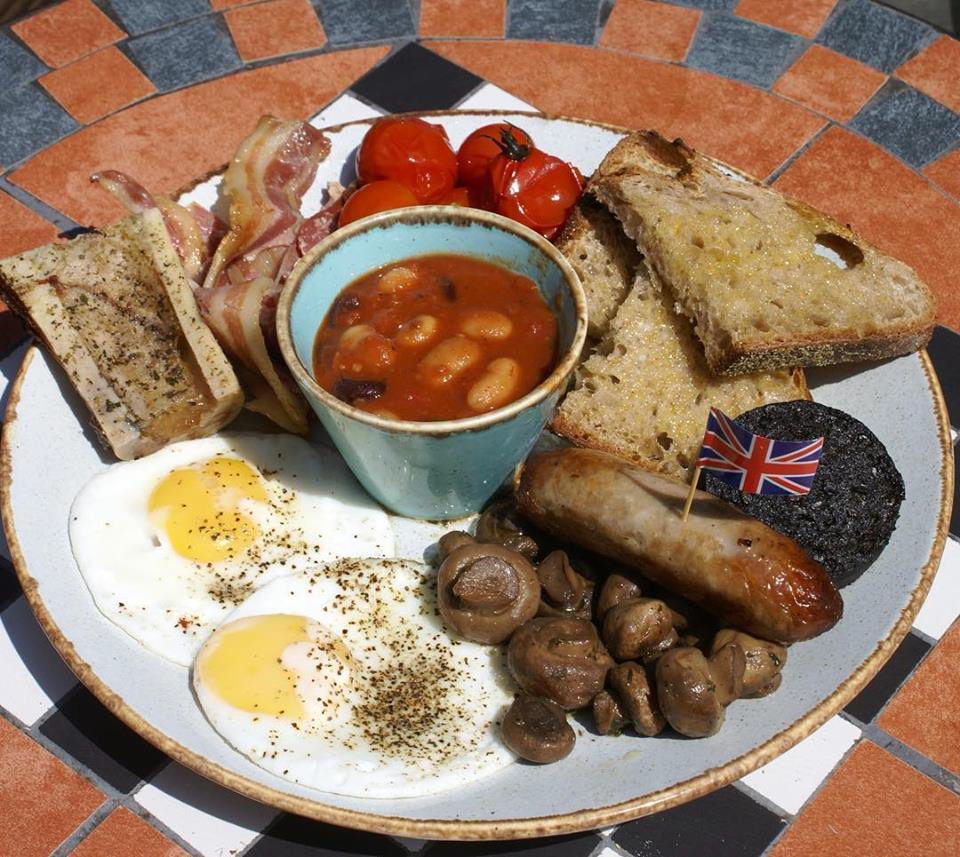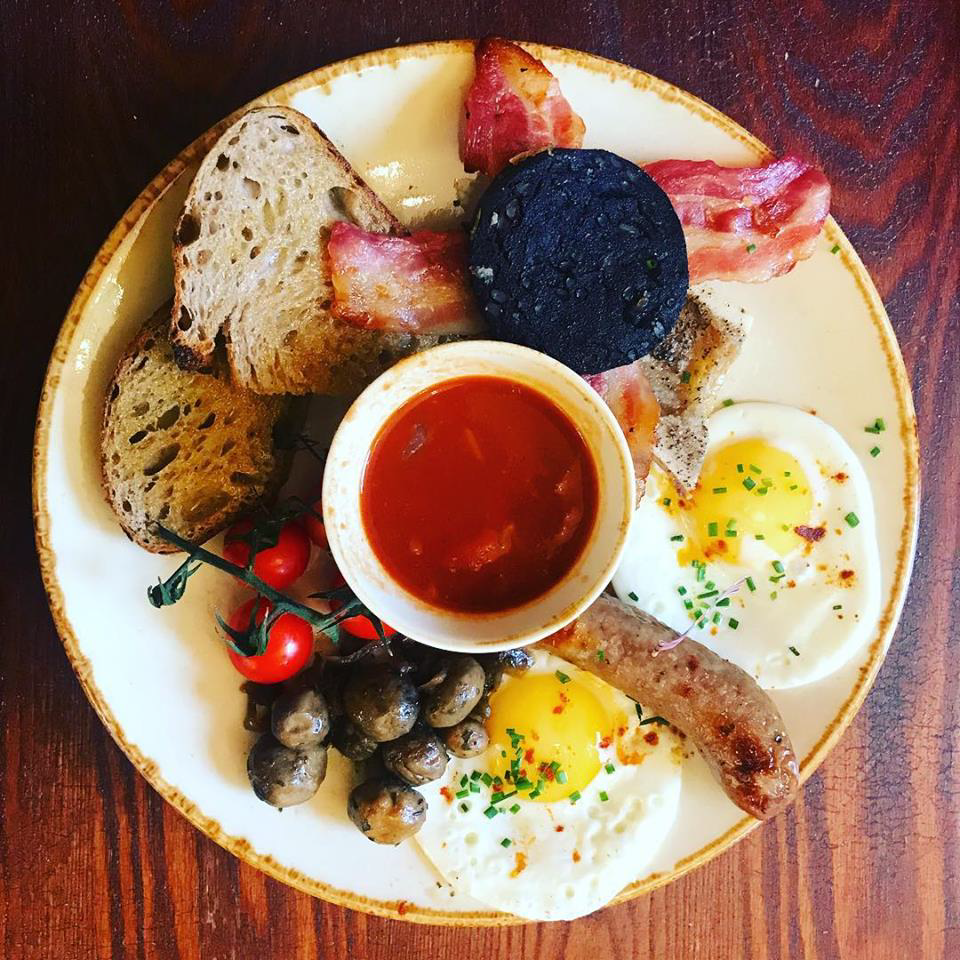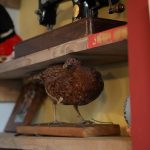Intro and History
- Home
- Intro and History

The Full English breakfast – a history
‘To eat well in England you should have breakfast three times a day.’ So wrote the British playwright Somerset Maugham almost a century ago, in what can be read as a ringing endorsement of the English breakfast but also, frankly, more than a bit of a dig at the rest of our cuisine.
We can all agree that English cooking has come a long way in the last hundred years or so since Maugham, notably living in France at the time, threw his Francophile hat into the ring, and the Full English has gone from strength to strength in that time too, adapting and evolving to the tastes of new generations of devotees without ever forfeiting its traditional appeal.
As an inveterate lover of the Full English in all its forms, and as someone who makes a substantial part of my living creating new takes on traditional Full English and Full English with a twist breakfast recipes, I’ve done a fair bit of research into the history of the English Breakfast in an attempt to understand this culinary phenomenon better, and what makes it so beloved of Brits, however much they might argue about what it actually is.
Because, make no mistake, definitions can get pretty sticky. Put a dozen devotees, all good men and true, into a room together and ask them to agree a model Full English, and you’re likely at the very least to end up with egg on your face.
Most lovers will agree it has to contain the aforementioned egg, along with bacon and sausages, but after that we’re in stormy waters. Some will stake a claim for grilled tomatoes while others go for baked beans. Then there are the thorny issues of grilled versus fried, black pudding versus white, and which ingredients should or shouldn’t be touching on the plate, a debate immortalised by Alan Partridge: ‘More distance between the egg and the beans,’ he famously declares. ‘I may want to mix them, but I want that to be my decision. Use the sausage as a breakwater.’
Which sides of these heated debates you come down on, and whether you choose soda bread or tattie scones or laverbread or even haggis as part of your ultimate breakfast, will probably depend on where you’re from geographically.
But, beyond these issues of geography, as a gourmet and a total history nut I have gained a certain amount of insight into this most quintessentially English of dishes by delving into the breakfast heritage of the British Isles.
Here’s what I found: Surprisingly, for the longest time on our sceptred isle, breakfast was never really a thing. In the dark ages eating too early in the day was considered to constitute the sin of gluttony, and no one of any consequence ate much before noon, at least in not in public. Breakfast as an event, it seems, only really took off in the thirteenth century, with titled country house families at the vanguard of this culinary fashion.

By the middle ages it seems these fledgling aristocrats had gotten over any sacred squeamishness, and were employing fairly excessive breakfast banquet hospitality as a means of showing off their social status to other visiting VIPs. These morning feasts were anything but simple affairs, prepared with great skill by a team of culinary professionals following pretty full-on Anglo Saxon recipes, and made up of such medieval delicacies as stewed figs, collared tongues and pigs’ cheeks. The poor peasants meanwhile were stuck with thin porridge and weak ale: all very Blackadder and Baldrick. It wasn’t until the Victorian era that the English breakfast we’d recognise today came into being.
Thanks to industrialisation and the first sniffs of globalised trade, the fortunes of the newly established middle class were on the rise, and breakfast suddenly became a significant social event and an opportunity to demonstrate taste and spending power. Mrs Beeton’s Book of Household Management, first published in 1861, contains one of the first published Full English recipes, and is effusive in its endorsement of a hearty (and for most an almost prohibitively expensive) English breakfast of ingredients such as cod roe, game birds (snipe and woodcock) and stuffed fish. Victorian innovations such as improved transportation and food processing techniques meant cured meats, including bacon (first cured in the early eighteenth century) became increasingly popular staple ingredients of the Full English, along with tongue and kippers and delicacies such as devilled kidneys, bone marrow and pork chops.

The advent of large scale printing presses and national newspapers also allowed breakfast became the one meal of the day where it was socially acceptable, should you feel so inclined, to ignore your dining companions in favour of the sports pages. It was the Edwardians though who standardised the Full English into the dish we mostly recognise today. Buoyed by Empire, and enjoying a golden age of pre-war prosperity, the classic Full English increasingly became the staple breakfast of the entire English middle class, served not only in private homes but in hotels, railway dining cars and aboard ship.
This standardisation of form and ingredients (back bacon, eggs, British sausage, black pudding, baked beans, grilled tomatoes, fried bread, toast, jams and marmalades, tea and coffee) increased ease of preparation and affordability for a new generation of connoisseurs. Empire also opened up the Full English to a wider audience, as expats demanded the comforts of home. Just as English breakfast was exported across Empire, it also bounced back in surprising forms: kedgeree, a lightly spiced Indian dish of rice, smoked fish and boiled eggs, became for a while a fairly regular Full English addition.
The popularity of the Full English finally spread to the English working classes in the 1930s, curtailed for a while by the rationing of eggs and bacon during World War II. Bouncing back however, it hit its popular peak as a culinary phenomenon in the 1950s, when more than half of the British population were estimated to start their day with a Full English, making it a truly national dish. ‘The Full English’ earned its name when it contained all of the standardised ingredients of the Edwardian version, and during World War II was also popularly referred to as The Full Monty, not in honour of impromptu striptease but of the much loved General Montgomery (or Monty) who was rumoured to always start his day with a full English, whatever campaign conditions he found himself in.
It’s increasingly rare for busy Brits these days to put together a full English before the rush hour commute, although a rise in healthier breakfast options has encouraged the Full English to evolve too, so that it seem to be enjoying its own modest culinary Renaissance, tradition respected but modified to the tastes of the modern consumer.

‘To eat well in England you should have breakfast three times a day.’ So wrote the British playwright Somerset Maugham almost a century ago, in what can be read as aringing endorsement of the English breakfast but also, frankly, more than a bit of a dig at the rest of our cuisine.
We can all agree that English cooking has come a long way in the last hundred years or so since Maugham, notably living in France at the time, threw his Francophile hatinto the ring, and the Full English has gone from strength to strength in that time too, adapting and evolving to the tastes of new generations of devotees without everforfeiting its traditional appeal.
As an inveterate lover of the Full English in all its forms, and as someone who makes a substantial part of my living creating new takes on traditional Full English and Full English with a twist breakfast recipes, I’ve done a fair bit of research into the history of the English Breakfast in an attempt to understand this culinary phenomenon better, and what makes it so beloved of Brits, however much they might argue about what itactually is.
Because, make no mistake, definitions can get pretty sticky. Put a dozen devotees, all good men and true, into a room together and ask them to agree a model Full English, and you’re likely at the very least to end up with egg on your face.
Most lovers will agree it has to contain the aforementioned egg, along with bacon andsausages, but after that we’re in stormy waters. Some will stake a claim for grilled tomatoes while others go for baked beans. Then there are the thorny issues of grilled versus fried, black pudding versus white, and which ingredients should or shouldn’t be touching on the plate, a debate immortalised by Alan Partridge: ‘More distance between the egg and the beans,’ he famously declares. ‘I may want to mix them, but I want that to be my decision. Use the sausage as a breakwater.
’Which sides of these heated debates you come down on, and whether you choose soda bread or tattie scones or laverbread or even haggis as part of your ultimate breakfast, will probably depend on where you’re from geographically.
But, beyond these issues of geography, as a gourmet and a total history nut I have gained a certain amount of insight into this most quintessentially English of dishes by delving into the breakfast heritage of the British Isles. Here’s what I found:
Surprisingly, for the longest time on our sceptred isle, breakfast was never really athing. In the dark ages eating too early in the day was considered to constitute the sin of gluttony, and no one of any consequence ate much before noon, at least in not inpublic. Breakfast as an event, it seems, only really took off in the thirteenth century, with titled country house families at the vanguard of this culinary fashion.
By the middle ages it seems these fledgling aristocrats had gotten over any sacred squeamishness, and were employing fairly excessive breakfast banquet hospitality as a means of showing off their social status to other visiting VIPs. These morning feasts were anything but simple affairs, prepared with great skill by a team of culinary professionals following pretty full-on Anglo Saxon recipes, and made up of such medieval delicacies as stewed figs, collared tongues and pigs’ cheeks. The poor peasants meanwhile were stuck with thin porridge and weak ale: all very Blackadder and Baldrick.
It wasn’t until the Victorian era that the English breakfast we’d recognise today cameinto being. Thanks to industrialisation and the first sniffs of globalised trade, thefortunes of the newly established middle class were on the rise, and breakfast suddenly became a significant social event and an opportunity to demonstrate tasteand spending power. Mrs Beeton’s Book of Household Management, first published in 1861, contains one of the first published Full English recipes, and is effusive in itsendorsement of a hearty (and for most an almost prohibitively expensive) English breakfast of ingredients such as cod roe, game birds (snipe and woodcock) and stuffed fish.
Victorian innovations such as improved transportation and food processing techniquesmeant cured meats, including bacon (first cured in the early eighteenth century) became increasingly popular staple ingredients of the Full English, along with tongue and kippers and delicacies such as devilled kidneys, bone marrow and pork chops. The advent of large scale printing presses and national newspapers also allowed breakfast became the one meal of the day where it was socially acceptable, should you feel so inclined, to ignore your dining companions in favour of the sports pages. It was the Edwardians though who standardised the Full English into the dish we mostly recognise today. Buoyed by Empire, and enjoying a golden age of pre-warprosperity, the classic Full English increasingly became the staple breakfast of the entire English middle class, served not only in private homes but in hotels, railway dining cars and aboard ship.
This standardisation of form and ingredients (back bacon, eggs, British sausage, blackpudding, baked beans, grilled tomatoes, fried bread, toast, jams and marmalades, tea and coffee) increased ease of preparation and affordability for a new generation of connoisseurs. Empire also opened up the Full English to a wider audience, as expats demanded the comforts of home. Just as English breakfast was exported across Empire, it also bounced back in surprising forms: kedgeree, a lightly spiced Indiandish of rice, smoked fish and boiled eggs, became for a while a fairly regular Full English addition.
The popularity of the Full English finally spread to the English working classes in the 1930s, curtailed for a while by the rationing of eggs and bacon during World War II.
Bouncing back however, it hit its popular peak as a culinary phenomenon in the 1950s, when more than half of the British population were estimated to start their day with a Full English, making it a truly national dish.
‘The Full English’ earned its name when it contained all of the standardised ingredients of the Edwardian version, and during World War II was also popularly referred to as The Full Monty, not in honour of impromptu striptease but of the muchloved General Montgomery (or Monty) who was rumoured to always start his day with a full English, whatever campaign conditions he found himself in.
It’s increasingly rare for busy Brits these days to put together a full English before the rush hour commute, although a rise in healthier breakfast options has encouraged the Full English to evolve too, so that it seem to be enjoying its own modest culinary Renaissance, tradition respected but modified to the tastes of the modern consumer.
CONTACT US
ADDRESS:
Blighty Cafe
35-37 Blackstock road
London
N4 2JF
ADDRESS:
Blighty cafe – Tottenham
266 High road
London
N15 4AJ










